National Healthcare Quality and Disparities Report
Latest available findings on quality of and access to health care
Data & Analytics
- Data Infographics
- Data Visualizations
- Data Tools
- Data Innovations
- All-Payer Claims Database
- Consumer Assessment of Healthcare Providers and Systems (CAHPS®) Program
- Healthcare Cost and Utilization Project (HCUP)
- Medical Expenditure Panel Survey (MEPS)
- National Healthcare Quality and Disparities Report Data Tools
- Network of Patient Safety Databases
- AHRQ Quality Indicator Tools for Data Analytics
- Surveys on Patient Safety Culture
- United States Health Information Knowledgebase (USHIK)
- Data Sources Available from AHRQ
Data Resources
Filter by Topic
- Access to Care (4)
- Adverse Events (1)
- Ambulatory (2)
- By Payer (2)
- By State (3)
- Children (3)
- Children (1)
- Children/Adolescents (1)
- Clinicians (1)
- Community Pharmacies (1)
- Costs (2)
- Costs & Charges (1)
- Coverage (4)
- Data (3)
- Discharges by State (1)
- Disparities (2)
- Elderly (1)
- Element Definitions, Values & Information Models (1)
- Emergency Departments (4)
- Employer (1)
- Estimates (State & Metro) (1)
- Expenditures & Projections (3)
- Health (5)
- (-) Health Care (8)
- Health Conditions (5)
- Health Plans (3)
- Health Systems (1)
- Hospital Characteristics (2)
- (-) Hospitalizations (10)
- Household Spending (1)
- Injuries Seen (1)
- Inpatient Care (1)
- Insurance (9)
- Medicaid (1)
- Medicare (1)
- Men (1)
- Mental Health (3)
- Mental Health and Substance Abuse Disorders (2)
- Obesity (1)
- Opioids (1)
- Patient Experience (1)
- Payment Sources (1)
- Premiums (1)
- Prescription Drugs (1)
- Preventable (1)
- Private (1)
- Quality (3)
- Readmissions (2)
- Safety Culture (1)
- SCHIP (1)
- Spending (2)
- State (1)
- Surgery (3)
- Systematic Review (1)
- Systems - Characteristics (1)
- Uninsured (2)
- Use (3)
- Visits (2)
- Women (2)
Data Resources
The Agency for Healthcare Research and Quality (AHRQ) offers practical, research-based tools and other resources to help a variety of health care organizations, providers and others make care safer in all health care settings.
Results
1-10 of 18 Resources displayed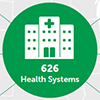
This inaugural edition of the Compendium—Compendium of U.S. Health Systems, 2016—is composed of 626 U.S. health systems, defined in this analysis to include at least one hospital and at least one group of physicians providing comprehensive care, and who are connected with each other and with the hospital through common ownership or joint management. The Compendium database includes: System identification number (a unique number assigned by AHRQ), name, home office city, and State. Indicators of which data source identified the health system and health system identification numbers in the originating data source. Total counts of system hospitals, physician groups, physicians, primary care physicians, extent to which systems own or manage hospitals in multiple States, total acute care beds, discharges, and residents. Variables identifying the extent to which systems include investor-owned hospitals, serve children, include teaching hospitals, and serve a disproportionately high share of low-income and uninsured individuals.
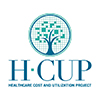
These HCUP Statistical Briefs provide general statistics about the cost of hospital stays in the United States, including the most costly conditions (diagnoses) and procedures.
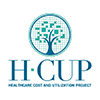
These HCUP Statistical Briefs provide general statistics about hospital stays in the United States, including an overview of the most frequent conditions (diagnoses) seen and the most frequent procedures performed in hospitals.
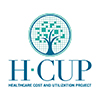
These HCUP Statistical Briefs provide statistics about potentially preventable or avoidable hospitalizations in U.S. hospitals.
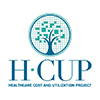
These HCUP Statistical Briefs provide statistics about readmissions to U.S. hospitals, including readmissions involving specific conditions (diagnoses) and procedures.
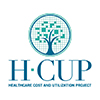
HCUPnet is a free, on-line query system based on data from HCUP. The system provides health care statistics and information for hospital inpatient, emergency department, and ambulatory settings, as well as population-based health care data on counties.
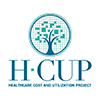
The Kids' Inpatient Database (KID) is the only all-payer pediatric inpatient care database in the United States, containing data from two to three million hospital stays. Its large sample size is ideal for developing national and regional estimates and enables analyses of rare conditions, such as congenital anomalies, as well as uncommon treatments, such as organ transplantation.

The Medical Expenditure Panel Survey (MEPS) is a set of large-scale surveys of families and individuals, their medical providers, and employers across the United States. MEPS is the most complete source of data on the cost and use of health care and health insurance coverage.

The MEPS Medical Provider Component (MPC) collects data from a sample of providers (physicians, hospitals, home health agencies, and pharmacies) who provided medical care to MEPS Household Component respondents. The MPC collects data on dates of visits/services, use of medical care services, charges and sources of payments and amounts, and diagnoses and procedure codes for medical visits/encounters.

Because demographic characteristics are collected in the MEPS-Household Component, health care disparities can be examined for any topics within the MEPS Household Component survey.



